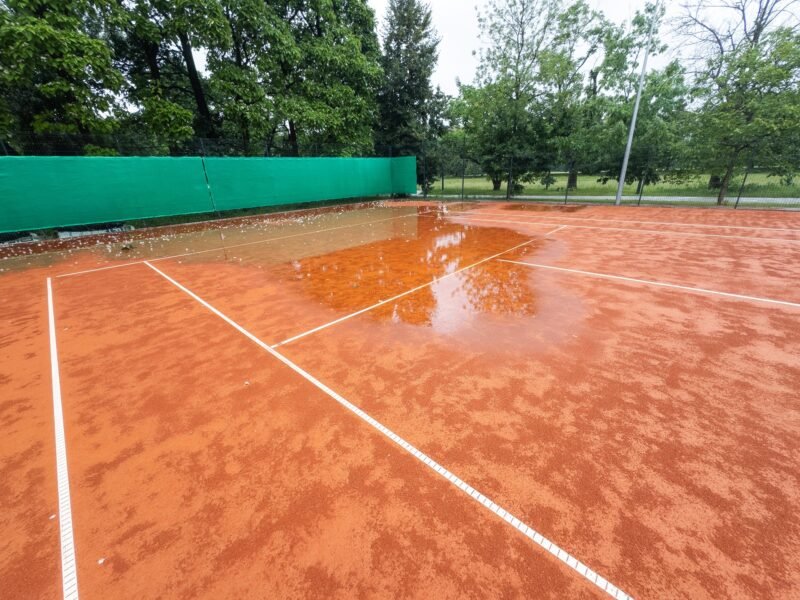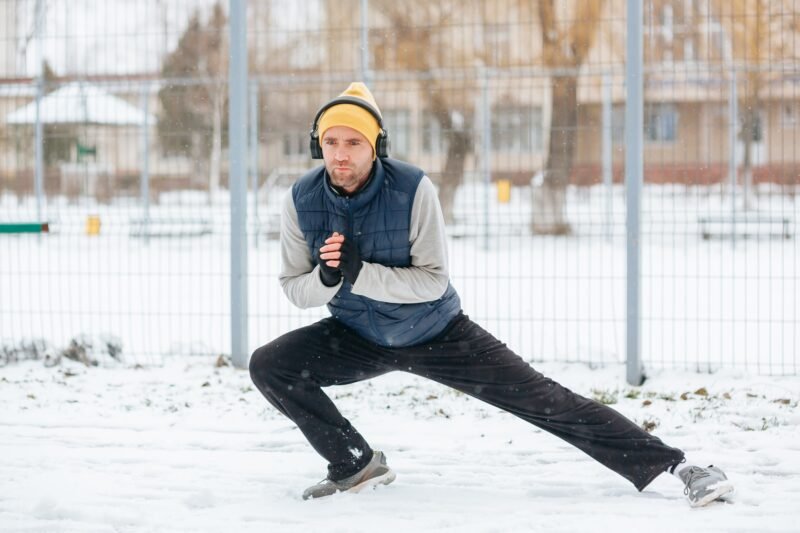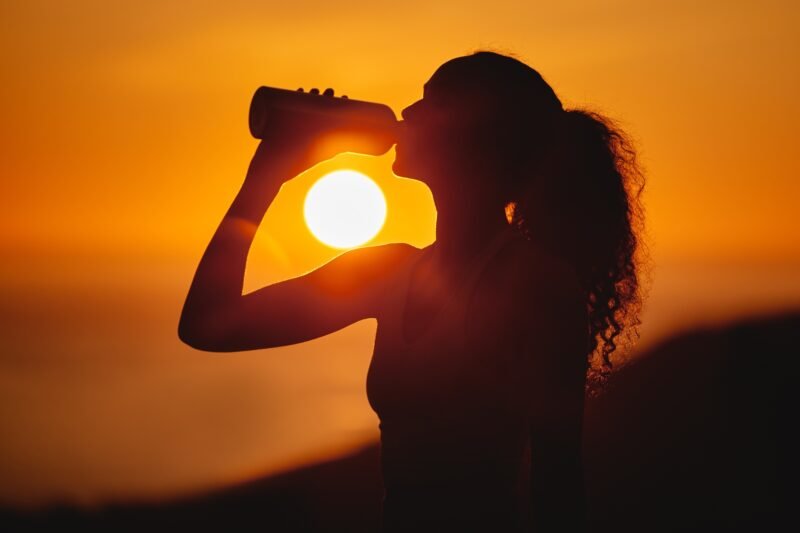Can You Play Pickleball in the Rain, Wind or Cold? Tips for All Weather
Table of Contents
- Playing Pickleball in Bad Weather: Tips for Outdoor Sports Enthusiasts
- Understanding Bad Weather and Its Impact on Pickleball
- Safety First: Sports Safety Tips for Playing in Bad Weather
- Adapting Your Game: Strategies for Playing in Bad Weather
- Equipment Considerations for Bad Weather Pickleball
- Finding Indoor Alternatives for Pickleball
Prefer to listen? Tap play below!
Playing Pickleball in Bad Weather: Tips for Outdoor Sports Enthusiasts
Playing pickleball in bad weather will offer a whole new set of game dynamics that you must learn to play well efficiently. Bad weather pickleball will affect everyone’s performance. Your ball control may be thrown off and it’s much like inclement weather can affect all pickleball player performance. Overall court ball control with wet terrain could lead to a few slips and falls on-court, and I’ve even seen some very strong winds that just play havoc with the occasional missed ball.
Understanding Bad Weather and Its Impact on Pickleball
Outdoor sports are incredibly vulnerable to the bad weather. Heavy rain, strong wind, extreme heat, and cold could all be things that would obstruct anyone from performing a sport adequately outside. Lightly raining? A quick match might still be playable. Raining torrentially? That’s a no from me, slipping and injuries are waiting to happen.
On the other hand, cycling in wind? Game over. Just to name a few, here are the obvious conditions in which certain weather phenomena might transpire.

Looking down the nets across the many tennis courts wet after a rain shower. High quality photo
Rain: On surfaces on which you would normally find grip in athletic shoes, it might now be slippery. On concrete, a wet surface would notably change the mechanics of an athlete’s game. If an athlete feels like they are about to fall over, they would probably slip or fall instead of catching themselves.
Heat: Due to extreme heat, an athlete might be dehydrated. If this is the case, their endurance would likely decrease faster. Athletes would likely change their strategy for hydration throughout the match.
Wind: In the wind, the ball becomes awfully unpredictable. The ball would go a couple of inches farther into the wind than normal. Any lobs would most likely go out.
Cold: Balls tend to crack faster in the cold. Injury is prone to happen because of tense muscles.
Moral of the Story: Participants should prepare adequately for any and all weather conditions with the right gear and equipment.
Safety First: Sports Safety Tips for Playing in Bad Weather
Especially when faced with adverse weather conditions, sport safety is an important message for all. Whether you are experiencing high temperatures in the summer months on outdoor courts or the pounding rain that drives clubs indoors or keeps others out of play, the overall well-being of personal health and the people around you becomes promoted with a smile.
One answer to the call of sport safety is to dress appropriately. When it is wet or the law of averages suggests it might be today, the right type of gear will save your game. All it means is wet gear could do a world of good for your team and keep everyone dry. Hypothermia is dangerous.
In seasonal heat, hydration is huge. Making sure you constantly give your body the H2O it needs will prevent metabolic domination. How do you know if you’re dehydrated? The early signs of heat exhaustion affect your body in a number of ways that cause your body to start shutting down too. The traits are widely discussed in many health or sport-related publications and include many of the most important vital signs: excessive sweating, fatigue, diarrhea, lightheadedness, vomiting, and a host of other negative symptoms. When the signs tell you what’s going on, it’s time for some rest, shade, possibly wet down the body on yours, and sip some water, not a carbonated drink or beer.
Also, be careful of the cold air because the first sign is shivering. Shivering follows the muscle/bone pain that actually slows muscles’ responsiveness. This affects your pickleball performance with rubbery wrist shots, and misdirected service balls. Soon after, if you do not do something about it, you’ll fatigue early and start to cause injury.
Adapting Your Game: Strategies for Playing in Bad Weather
Adapting gameplay to adverse weather conditions is key to maintaining sports performance.
Wet conditions: athletes naturally adjust the technical and strategical components of their sport based on the conditions they encounter. For instance, in the rain, players would initially adopt a lower center of gravity when getting ready for the ball. Traction would be strongly compromised on concrete, increasing the chances of one slipping. Consequently, one must adjust their footwork to take smaller, more controlled steps to maintain agility.
Windy conditions: in pickleball, adjusting one’s angles to the direction of the wind and where you want the ball to go could improve your hits. A professional pickleballer with a good understanding of wind trajectory might hit softer or lower so the ball won’t be affected by the wind too much. Negative, uncontrollable environmental features often increase the athletes’ cognitive abilities, leading to more intensive and efficient technical training sessions.
Timing of play: knowing the environment to select the best time to play is essential too. I don’t mean that you should peer out of your window to see which time of the day is less rainy, but to check the weather forecast to ascertain the time slot where it most likely won’t rain according to the hourly forecast. Birds mostly fly and forage in the early mornings and late afternoons, and not at the peak heat of the day. Similarly, these fall within the hours of the day where winds are at their calmest (late morning to early afternoon), according to Google’s obsession with concise graphs and minimal white and green color combinations. From a common-sense perspective, one would naturally schedule a training session to when the weather is just right in order to perform at optimal conditions.

A young adult man trains his body and mind through outdoor gymnastics during wintertime, with headphones providing musical motivation.
In sports, physicality is not everything; a strong set of mental skills play numerous and diverse parts. This is very true when it comes to bad weather, where mentally resilient athletes would then do well. Having a mindset for adaptability and flexibility are keys here. Confidence can be built with time and preparative visualization techniques to impose a positive impression of themselves under poor conditions, using positive self-talk. It allows one to keep focused on the game and be confident that the conditions have less effect on you, and definitely be more risk-ready than the others.
You can’t train without the correct gear. With the right clothing, you give yourself the chance to be protected from the weather as you should be, and with that, you can focus on the actual training and not the rain. The playing kit includes a competitive uniform, training dri-fit shirts or uniforms, a lined hoodie, shorts, and a pair of socks. Bring along an extra pair of clothes too.
Equipment Considerations for Bad Weather Pickleball
The gear you use when playing sports in bad weather can make a big difference in both performance and safety. It makes sense: the rain, wind, and cold change the way we play, so our equipment needs to be up for the fight. On a technical level, bad weather gear often has the following properties/characteristics:
- Weather-resistant paddles: for pickleball, these paddles are designed to repel water, so water droplets, runoff, and small splashes aren’t likely to affect the way you hit your shots.
- Weather-resistant balls: water-resistant balls are designed to maintain functional and predictable bounce and flight characteristics. The last thing you want to do on a chill Saturday afternoon is get in a fight about how your ball is waterlogged and “wasn’t like that” when you first bought it.
- Shoes for different surfaces: playing on a wet hard court is tricky, but in most cases, a shoe with a non-marking rubber sole will suffice. Be sure to get a caged stable shoe or else you might find yourself on the ground.
In addition, having these items could also spare you serious injury out on the field or court. We’ve all taken a big tumble, we’re talking a knock to the ego, back, head, limbs, skin, and cellular level, and while seemingly harmless, falls can have very serious and long-lasting consequences. Choose the products that have the gear you need, in the sizes you need, and rated the way you need.
Finding Indoor Alternatives for Pickleball
When bad weather strikes, outdoor sports enthusiasts often find themselves at a loss, unable to engage in their favorite activities. However, exploring options for playing pickleball indoors can provide a viable solution, ensuring that players can continue to enjoy the game regardless of the weather conditions outside.

Stay hydrated.
Indoor facilities dedicated to pickleball offer numerous benefits that enhance the playing experience. One of the most significant advantages is the consistent playing environment. Unlike outdoor sports, where wind, rain, or extreme temperatures can affect gameplay, indoor courts maintain a stable climate. This allows players to focus on their skills and strategies without the distractions of unpredictable weather, leading to improved performance and enjoyment.
Moreover, indoor pickleball facilities often provide high-quality surfaces specifically designed for the sport. These surfaces can enhance ball bounce and player movement, contributing to a more enjoyable and competitive game. Additionally, many indoor venues are equipped with proper lighting and ventilation, further improving the overall experience. This contrasts sharply with outdoor sports, where uneven surfaces and natural elements can hinder play and increase the risk of injury.
Another benefit of indoor pickleball facilities is the opportunity for year-round play. While outdoor sports are often seasonal, indoor venues allow players to engage in their favorite activities regardless of the time of year. This accessibility can foster a stronger sense of community among players, as they can participate in leagues, tournaments, and social events throughout the year, building lasting friendships and rivalries.
Furthermore, indoor facilities often provide amenities that enhance the overall experience. Many venues offer equipment rentals, coaching, and organized events, making it easier for newcomers to learn the game and for seasoned players to refine their skills. This supportive environment can help grow the sport, attracting more players and increasing its popularity, which is often limited in outdoor settings due to weather constraints.
In conclusion, when bad weather makes outdoor play impossible, indoor pickleball facilities present an excellent alternative. They offer a consistent playing environment, high-quality surfaces, year-round accessibility, and additional amenities that enhance the overall experience. By embracing indoor options, pickleball enthusiasts can continue to enjoy their favorite sport, regardless of the elements outside.
Going out to play pickleball when the weather is bad can be confronting. It’s seen as a big challenge, but it’s also an opportunity for most players to dig deep into their inner self and establish what they truly want to get from pickleball. And the topics most discussed in relation to this pickleball challenge are; how safe is it to play out there (safety is always first on the agenda), how well can a player adapt to playing in bad weather conditions, and what type of preparation would be required to play well in that environment.
Safety is always first, the surface can be slippery and the risk of injury will go up. Also, the ball sometimes just doesn’t do what you want or expect it to do. This often doesn’t make for an overly fun environment. A real pickleballer should be able to adapt to any conditions. With adaptability, some of the simplest things, like serving, still work.
Other Articles
Pickleball Drills to Improve Net Play
Pickleball Tournament Prep Checklist
Pickleball Tips for Playing Indoors
Pickleball Drills for Better Reaction Time
How to Build a Backyard Pickleball Court
Pickleball Strategy for Windy Conditions
Pickleball Paddle Grip Techniques
Improve Pickleball Serve Accuracy
Pickleball Doubles Positioning Tips

